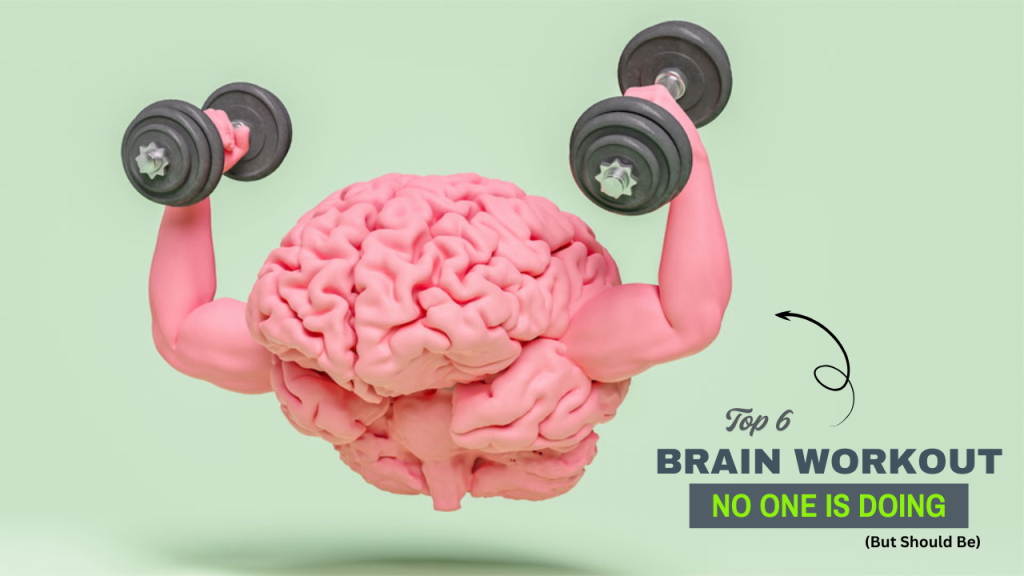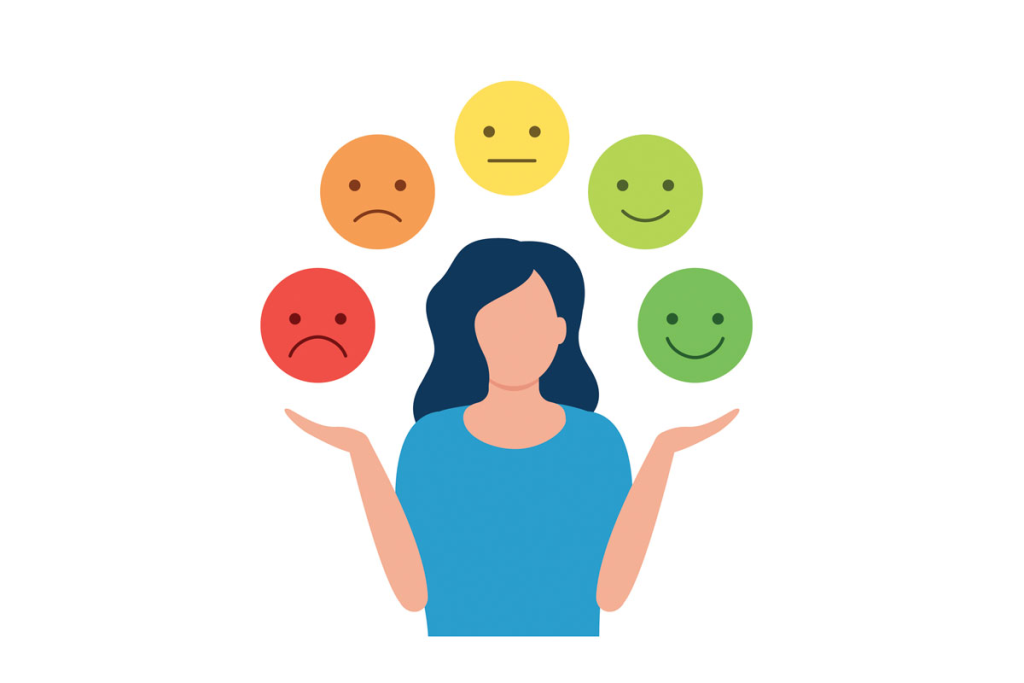When it comes to fitness, we obsess over flat abs, toned arms, and the number of steps we walk each day. But what if we told you that the most important workout is the one you’re not doing—and it’s for your brain?
That’s right. Your brain, the command center of your body, needs its own version of exercise to stay sharp, resilient, and powerful. Yet, while millions hit the gym daily, very few engage in activities that actively train their cognitive functions. The brain workout no one is doing isn’t just about puzzles or crosswords—it’s a science-backed, multi-layered mental fitness routine that has the potential to transform your focus, memory, creativity, and even emotional regulation.

30-Day Brain Workout Results
| Area of Improvement | What You Might Experience |
|---|---|
| Memory | Sharper recall, especially with names, dates, and tasks. |
| Focus & Attention | Increased ability to concentrate and complete tasks without distraction. |
| Emotional Control | Better handling of stress, fewer mood swings, and enhanced self-awareness. |
| Problem Solving | Faster, more creative solutions to everyday challenges. |
| Mental Clarity | Reduced brain fog and greater clarity in thinking. |
| Productivity | Improved task management and decision-making efficiency. |
| Confidence | Feeling more mentally capable and alert in conversations or at work. |
| Learning Ability | Quicker understanding and retention of new information. |
| Neuroplasticity Boost | Strengthening of new neural pathways, enhancing cognitive resilience. |
| Sleep Quality | Deeper, more restful sleep due to better mental regulation. |
Note: Results can vary based on lifestyle factors like sleep, nutrition, and stress. For best results, combine brain training with physical activity and a healthy diet.
Why Your Brain Needs a Workout
Fun Fact: The average human brain shrinks by about 5% every decade after age 40.
Just like your body, the brain experiences wear and tear. Mental fog, forgetfulness, slower reaction times, and reduced problem-solving skills can all be signs of an underused brain. But research confirms that neuroplasticity—the brain’s ability to rewire itself—can be activated at any age.
So, if you’re not giving your brain a regular workout, it might be aging faster than it should.
The Cognitive Decline Myth
Myth Buster: “Memory loss is a normal part of aging.”
Truth: Mild forgetfulness can occur with age, but serious cognitive decline is not inevitable. It’s often the result of a sedentary lifestyle—physically and mentally.
In fact, studies show that individuals who engage in consistent cognitive training exhibit improved memory, sharper decision-making, and even enhanced emotional balance.
The Brain Workout Everyone Should Try (But Few Know About)
This brain workout isn’t a single game or app—it’s a blended mental regimen that includes the following components:
1. Dual-Task Training

What it is: Performing two cognitive tasks simultaneously, such as doing mental math while walking or reciting a poem while balancing on one foot.
Why it works: Enhances multitasking ability, strengthens neural connections, and improves attention switching.
2. Brain Aerobics

Coined by Dr. Lawrence Katz, brain aerobics involves doing tasks in novel ways—like brushing your teeth with your non-dominant hand, taking a new route to work, or closing your eyes while dressing.
Do You Know? These small daily changes activate underused areas of the brain, fostering new synaptic growth.
3. Emotional Labeling

What it is: A mindfulness exercise where you consciously name the emotions you’re feeling—e.g., “I’m feeling anxious,” or “This makes me angry.”
Why it matters: Neuroscience shows that labeling emotions reduces their intensity and engages the prefrontal cortex, improving emotional regulation and self-awareness.
4. Neurobic Learning

This involves learning something entirely unfamiliar—like a new language, musical instrument, or even juggling.
Bonus Tip: Try learning with your non-dominant hand. If you’re right-handed, write with your left. This builds hemispheric balance and boosts coordination and cognition.
5. Visualization Training

Elite athletes use this, but it’s wildly underused for brain fitness. Visualization involves mentally rehearsing actions or outcomes. For example, imagining yourself giving a speech boosts confidence and enhances memory recall and focus.
6. Cold Recall Sessions

Challenge yourself to recall a podcast or article after a few hours without rechecking it. This is called retrieval practice, and it’s one of the most effective ways to lock in information.
Examples for Each of the 6 Brain Workouts
| Workout Type | Description | Examples You Can Try |
|---|---|---|
| 1. Dual-Task Training | Perform two tasks that require mental effort at the same time | – Recite multiplication tables while walking – Balance on one foot while doing a memory game – Count backward by 7s while tossing a ball – Spell words backward while jogging |
| 2. Brain Aerobics | Do familiar tasks in unfamiliar or novel ways | – Brush your teeth with your non-dominant hand – Eat with chopsticks if you normally don’t – Rearrange your desk and work from a new spot – Try writing mirror text |
| 3. Emotional Labeling | Consciously identify and name your emotions | – Keep a daily mood journal – Pause during stress to say, “I’m feeling anxious” – Use an emotion wheel to expand vocabulary – Reflect and label emotions during meditation |
| 4. Neurobic Learning | Learn something completely new or outside your comfort zone | – Start learning a new language or dialect – Try a musical instrument for 10 minutes a day – Take up juggling or origami – Learn a new dance move or sport rule each day |
| 5. Visualization Training | Mentally rehearse or imagine scenarios in vivid detail | – Visualize giving a public speech – Imagine completing a complex task step by step – Practice “mental time travel” by replaying past events with new outcomes – Visualize your goals and daily success routines |
| 6. Cold Recall Sessions | Recall information after a delay without rechecking it | – Summarize a podcast after a few hours – List ingredients from a recipe you read in the morning – Write 5 key points from a meeting without notes – Recall yesterday’s to-do list from memory |
The Link Between Physical Movement and Brain Power
Physical workouts can serve as brain workouts—if done with intention.
Interesting Fact: Rhythmic aerobic exercise like dancing or brisk walking increases BDNF (brain-derived neurotrophic factor), which supports neuron growth and protection.
To supercharge this, combine movement with thinking—like solving riddles during a walk.
How to Build Your Daily Brain Workout Routine
Here’s a simple, effective weekly plan you can build on:
| Day | Brain Activity |
|---|---|
| Monday | 20 minutes of Dual-Task Training (mental math + walking) |
| Tuesday | Brain Aerobics (non-dominant hand tasks + visualization practice) |
| Wednesday | Learn a new word + use it in 3 different sentences |
| Thursday | Cold Recall of a podcast or article |
| Friday | Emotional Labeling journal + mindfulness |
| Saturday | Dance or yoga session with memory recall challenge |
| Sunday | Rest + light reading of unfamiliar topics |
The Takeaway: Your Brain Is Built to Evolve—If You Train It
Ignoring your brain’s need for stimulation is like owning a high-performance car and never taking it out of first gear.
The brain workout no one is doing—but everyone should—doesn’t require expensive equipment or hours of time. It just takes awareness, intention, and variety. From emotional control to memory, creativity, and resilience, the benefits are life-changing.
So while others are chasing six-packs, you’ll be strengthening something far more powerful: a sharp, agile, and enduring mind.
Frequently Asked Questions (FAQs)
What is a brain workout?
A brain workout is a set of mental activities designed to stimulate cognitive functions such as memory, focus, creativity, and problem-solving. Unlike passive activities, these exercises actively challenge the brain, encouraging neuroplasticity and long-term brain health.
Can brain workouts actually prevent cognitive decline?
While brain workouts cannot completely prevent age-related decline, numerous studies show that regular cognitive training can delay or reduce the severity of memory loss, improve focus, and enhance mental agility—especially when combined with physical activity and a healthy lifestyle.
How long do brain workouts take each day?
You can see benefits with as little as 15–30 minutes per day, especially when activities are diverse and involve deep engagement. It’s not about duration but consistency and variety.
Do physical exercises count as brain workouts?
Yes, especially if they involve coordination, rhythm, or multitasking. Activities like dancing, yoga, and aerobic workouts release brain-boosting chemicals (like BDNF) and improve cognitive function when done mindfully.
At what age should I start doing brain workouts?
It’s never too early or too late. Children benefit from playful cognitive challenges, while adults and seniors can retain sharpness and even reverse some decline with regular mental stimulation.
What’s the most overlooked brain training tip?
Novelty. The brain thrives on new experiences. Changing routines, learning a new skill, or even navigating a different path home can spark fresh neural connections and enhance brain flexibility.






Good
Awesome
Awesome
Good
Good